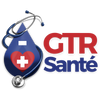IV (intravenous) therapy and IM (intramuscular) injections are both methods of delivering medications, vitamins, and nutrients directly into the bloodstream.
IV therapy involves administering fluids and medications through a catheter inserted into a vein, allowing for rapid absorption and a more potent effect. IV therapy is commonly used to treat dehydration, nutrient deficiencies, and other medical conditions.
IM injections, on the other hand, involve injecting medication or nutrients directly into a muscle. The absorption of IM injections is slower than IV therapy, but it is still an effective method for delivering medication to the body. IM injections are often used for vaccines, antibiotics, and pain medications.
While both methods have their advantages and disadvantages, IV therapy may be more effective in cases where rapid absorption is necessary, such as in medical emergencies or severe nutrient deficiencies. IM injections are typically used for more routine procedures, such as vaccinations and routine medication administration. Ultimately, the choice between IV therapy and IM injections will depend on the specific medical needs of the patient and the recommendation of a healthcare professional.
